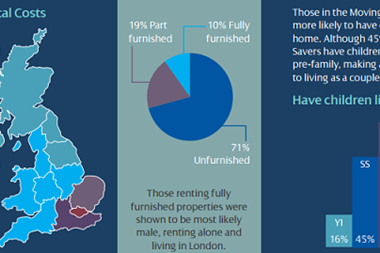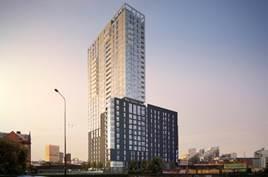The millennial generation’s living habits are changing. Responding to these trends with the provision of suitable housing will help to bridge the supply and demand imbalances among a demographic that is experiencing the lowest-ever levels of home ownership.

CBRE recently examined the living habits of the UK’s 22- to 29-year-olds in a bid to separate the facts from the myths surrounding millennial attitudes. Our report examined their views of home ownership, renting, how this compares with the rest of Europe and how it affects the UK’s housing market.
So what are the implications of millennial living trends for the property market? And how can the industry ensure requirements are met?
Our research found a surprising 41% of millennials in the UK still live with their parents. Of those, some 49% intend to leave the family home within the next two years, but the majority are expecting to move into rented accommodation.
Lifestyle and socio-economic factors play a part, but it appears that the lack of affordability in the housing market, combined with tougher mortgage requirements, is significantly delaying millennials from moving out of the family home and purchasing their own property.

In the UK, 75% of millennial renters cite affordability as the reason for staying in rented accommodation, compared with 63% of millennials in France and 56% in Spain.
There also seems to be an element of choice behind the decision to rent: 18% of UK millennials prefer the convenience of renting and 72% of respondents agree that purchasing a property would involve some lifestyle sacrifices.
Increasingly important role
CBRE’s research indicates the private rented sector will have an increasingly important role in providing homes for the future.
According to external forecasts, the number of households in the private rented sector will grow by 33% by 2025. Developers and investors have already begun to respond to this by increasing the build-to-rent (BTR) markets in some of the UK’s most populated cities, with a rise in investment interest, in particular, from international institutions.
Although initiatives such as Help to Buy continue to encourage and support first-time buyers, the government has recently signalled a shift in policy away from a focus on home ownership for young people. Last September, the housing minister indicated that affordable rental homes may now be included in targets for starter homes.

Living standards and expectations in the private rented sector are rising, too. With more millennials moving out of state-of-the-art student accommodation (a sector undergoing a major transformation), there is greater demand for high-quality new-build homes, offering flexible and convenient living with social areas and on-site amenities.
Many BTR developers are responding to millennial demand by adopting student-accommodation-style living in projects, incorporating large communal and dining areas and facilities such as gyms and libraries, and offering all-inclusive rental rates.
In London, The Collective Old Oak is a fantastic example of a co-living space that brings together a collection of individuals looking to create their own community in a flexible and hassle-free way.
Those developers, BTR providers and policymakers who respond to the changing market will be the most successful - and the most effective - in providing lasting housing solutions for young people.





























No comments yet